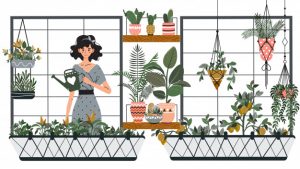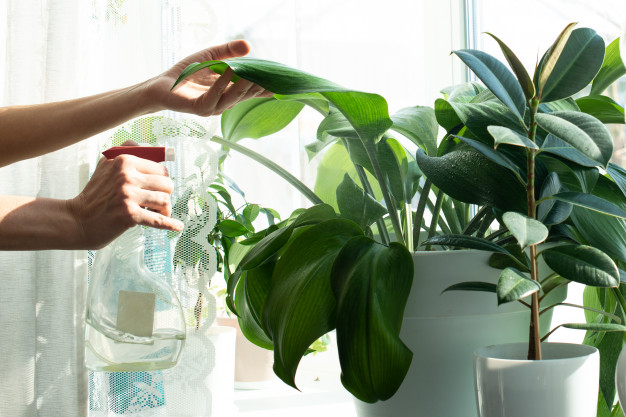Watering needs vary looking forward to conditions in each room of your house. Consider light, temperature, vents, humidity, and distance from windows.


Houseplants in additional light or higher temperatures might have more water than others. Position plants aloof from heating and air-conditioning vents.
Proper watering is very important
Proper watering is one of the foremost important gardening tasks that you simply must do without fail. Underwatering a houseplant will obviously cause many plants to wilt and die, but overwatering can cause low oxygen within the soil that finally ends up in plant disease. In both cases, the symptom you see may well be yellowing and /or wilted leaves.
Improper Watering Will Stress The Plant
It is also not uncommon for a plant to urge too dry — you water it and it seems to pop back, on the opposite hand it goes down. the strain may are excessive, some roots died, and now rot or disease has set in. Many plants are killed by an excessive amount of water and periodic neglect.
How To Know When To Water Houseplant


- Type of plant – Some plants love wet conditions but others prefer it dry. Some can tolerate drying out well before an honest soaking, but others need a steadily moist environment. Check your plant’s water requirements as this could help greatly when assessing whether to water or not.
- Test soil dryness – Use your finger and poke it into the potting mix around your plant, you can feel the top few inches of soil is damp or dry.
- Monitor the weight of the plant pot – I prefer checking the weight of the plant pot to test what quantity water remains within the soil. Dry soil is much lighter than wet soil, so there will be a significant weight difference between a potted plant that is watered and one that’s dry. With less amount of practice, you’ll know when to water your houseplants just by lifting them.
- Feel the soil through the drainage holes – Use your fingertips to feel the underside of the potting soil through the drainage holes within the bottom of the plant pot. You can assess the dryness of the soil to assist determine whether watering is required or not.
- Watch for signs of wilting – Wilting or drooping leaves can often indicate that your plants are plagued by a lack of water. Be careful to use this along with assessing the soil, as there are other things that are able to cause wilting, including overwatering or disease. It’s really important to treat the correct reason for wilting in your plants, rather than making the matter worse.
- Use a moisture meter – If you have a tricky plant, or if you simply want to be a touch more exact about the tactic, you’ll use a moisture meter to assess whether your houseplants need water.

Pingback: Philodendron Xanadu - Know and Care - Urban Indoor Garden
Thank you ever so for you article post.
I really like and appreciate your blog post.
Hi there, after reading this amazing paragraph i am as well delighted to share my knowledge here with friends.
I used to be able to find good info from your blog posts.
I ⅼike it when individuals ցet togethеr and share thoughts. Great website, stick with it!
Hey Barge,
Thank you for letting me know. All these comments from my readers make me write and more. Do let me know what more you want me to write about. Your Ideas are always welcome.
Regards,
The Gardner